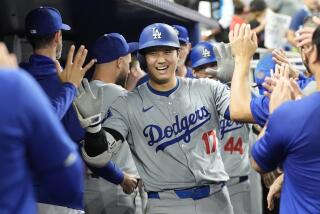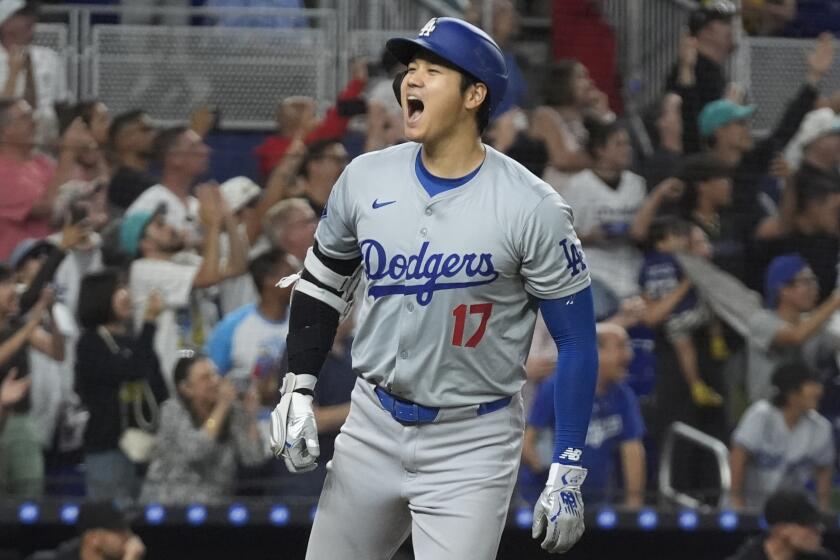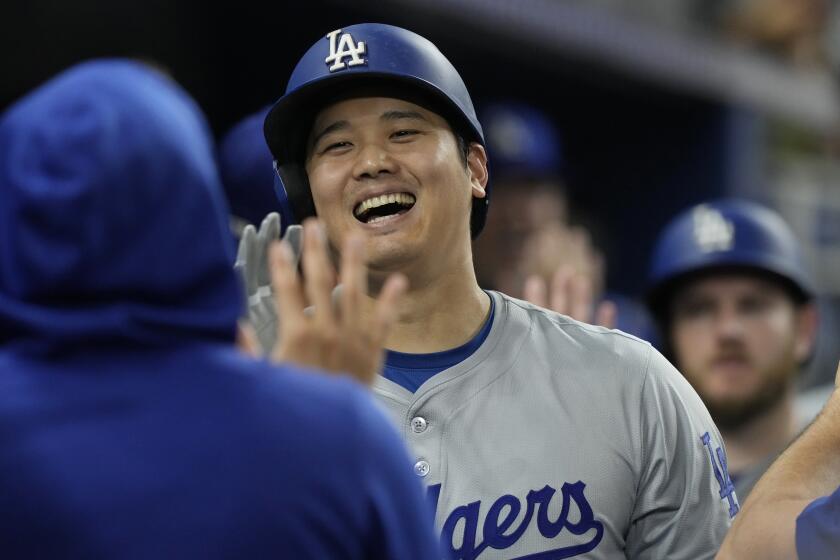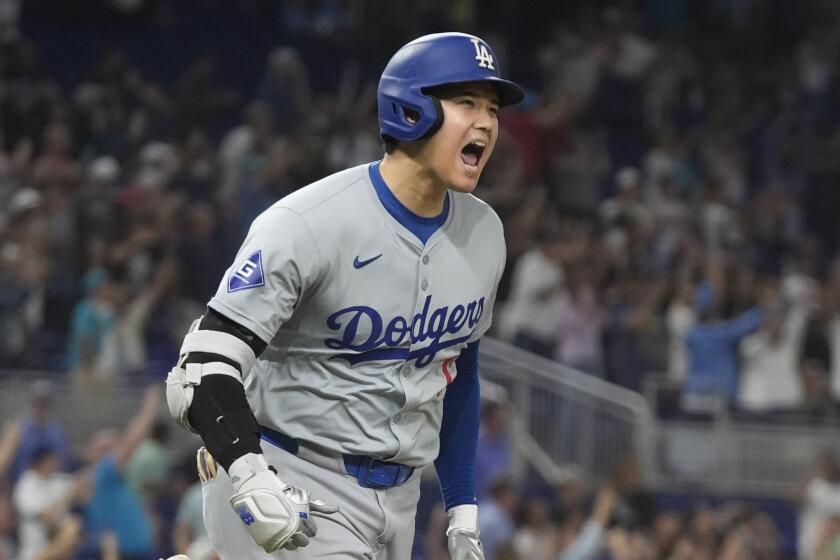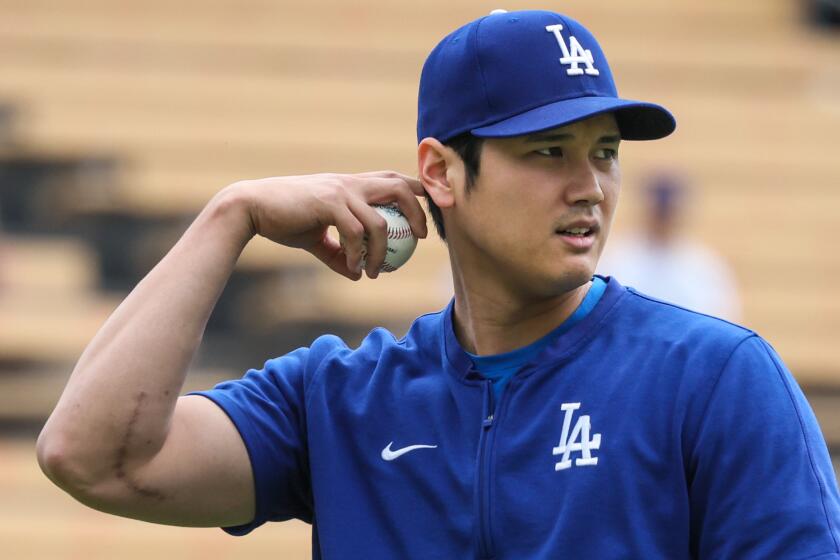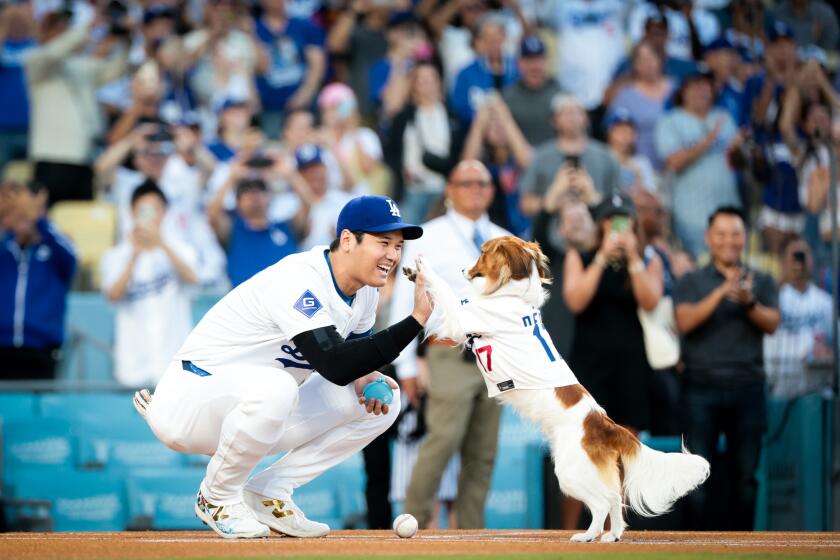Shifting the field of play
LOOKING back on it now, the Dodgers’ move from Brooklyn to Los Angeles in the late 1950s can be viewed in two vastly different lights:
To get it done was the eighth wonder of the world.
Once complete, it was the stage-setter for much that pro sports has become.
To understand the story, we must first acquaint ourselves with the main mover and shaker, a man named Walter O’Malley, whose family was not that far removed in those days from County Mayo, Ireland.
O’Malley was a lawyer who liked to plant orchids and who really wanted to be an engineer. One of his first jobs was helping to build the Midtown Tunnel in New York City. He even produced a book that listed all the engineers and construction companies in the New York area, a book that, in an updated format, is still in use today.
He practiced law and did well, but the lure of engineering, building things, never left him. Eventually, it led to his move from general counsel for the National League baseball team that played in Brooklyn to part owner, and then to president and man in charge.
The Dodgers had an aging ballpark, Ebbets Field, which needed fixing. Better yet, as far as O’Malley was concerned, it needed demolition. O’Malley was named president of the Dodgers in 1950, when he was 47, and his top priority was a new Ebbets Field.
Seven years later, having been around the block with every New York politician and influence peddler — he was laughed at for suggesting the idea of a domed stadium, a decade or more before the Astrodome — O’Malley concluded that the only way he would get his new stadium would be to do so elsewhere. After all, how long could you stay competitive when your team played at a field with access to a total of 700 parking spaces?
Elsewhere turned out to be nearly 3,000 miles away, in what was then still something of a frontier city to most New Yorkers, a place called Los Angeles.
O’Malley had seen the result of the Boston Braves’ move to Milwaukee, where attendance soared and the city embraced the team. He knew that the West Coast was far away, that constant travel back east would be cost-prohibitive. But he also knew that such problems would be eased if the Dodgers weren’t the only team to move.
And so he persuaded Horace Stoneham to take his Giants out of the ramshackle Polo Grounds and resettle in San Francisco, where the Dodgers-Giants rivalry, for so long a matter of a dozen miles, could continue at the distance of a quick plane flight.
Both teams moved quickly. In today’s world of lawyers, city politicians, people who want their names in the paper and papers willing to put them there, it would never have happened, or not nearly as fast.
On May 2, 1957, O’Malley took his famous helicopter ride over Los Angeles and saw the potential of Chavez Ravine as a stadium site. On May 28, 1957, the National League owners met in Chicago and, still glowing over the successful transfer of the Braves to Milwaukee, granted O’Malley and Stoneham the rights to make their moves.
For Stoneham, things fell together quickly. He got the locals in San Francisco to float a bond to build him a stadium. O’Malley, not expecting a public dole in Los Angeles — notice how some things never change — nevertheless had to jump through considerably more severe political hoops.
Part of the problem was a wave of public sentiment against displacing the people who had settled in the ravine, even though they had done so while awaiting construction of a public housing project that had subsequently been canceled. They had been ordered to leave.
Chavez Ravine was their home, no matter how acquired, and O’Malley was made to look like a robber baron in some quarters.
When he arrived in Los Angeles on Oct. 23, 1957, two weeks after the City Council had voted, 10-4, to extend a formal invitation to the Dodgers, O’Malley had, in effect, a baseball franchise, the rights to play in a major city and no stadium to do so.
And the season was scheduled to open in six months.
O’Malley met for months with officials at the Coliseum and the Rose Bowl. He even gave consideration to playing at old 22,000-seat Wrigley Field, which he had acquired as part of the complicated deal that gave him major league rights to Los Angeles.
Then one night he awoke with the answer. He would get the Coliseum configured for baseball in such a way that it would not disrupt its other tenants — USC, UCLA and the Rams. This would mean putting up a 40-foot fence in left field, but it could work for the short term.
Which it did. The Dodgers opened the 1958 season in the Coliseum, had a lousy year, then played there again in 1959 and won the World Series. The nationalization of baseball had begun.
Before O’Malley and Stoneham packed up, the farthest west that pro baseball teams played was in St. Louis. Today there are five teams in California alone, and this year three — the Dodgers, the Oakland Athletics and the San Diego Padres — made the playoffs.
The other two teams, the Giants and the Los Angeles Angels of Anaheim, played against each other in the World Series, won by the Angels, in 2002.
There are also teams in Dallas, Houston, Denver, Seattle and Phoenix, as well as in cities as far-flung as Miami, Atlanta and Minneapolis-St. Paul.
Controversy continued to swirl around O’Malley; he ended up purchasing the land at Chavez Ravine by, in part, transferring the deed to Wrigley Field to the city of Los Angeles. He announced that he would finance the construction of the stadium and would also pay sizable property taxes each year.
On Sept. 17, 1959, less than two years after his arrival in the city, he held a groundbreaking ceremony and hundreds of cars brought thousands of people to see for themselves what would happen.
In 1962, Dodger Stadium opened to rave reviews. It was state of the art, designed by architect Emil Praeger and mother-henned by somebody who had high standards when it came to engineering: Walter O’Malley.
“My dad always said that, once the stadium was built, everything else would be forgotten,” said Peter O’Malley, who eventually took over the Dodgers when his father died in 1979. “And he was right. It had perfect sightlines, it had a club level that was a forerunner of suites and personal seat licenses. And it was a single-use stadium, which is what we are coming full circle to today.”
Dodger Stadium became — and remains — a destination for Los Angeles sports fans.
It also remains a symbol of the beginning of a new deal in baseball, and, correspondingly, in sports.
With the western expansion of America’s then-national pastime, sponsors could begin to think nationally, teams could demand that they did so, and players could point to how much money all that thinking and demanding generated.
The prospect of sharing in this money, now that it was clearly available, made it less appealing for an athlete to stay on as, say, a member of the Philadelphia Phillies when there were other horizons. The battle over free agency would have been pointless if there were no new markets or money to be had.
Soon, “Go West, young man” became more than just a famous quote.
It was also easy for television, even in its fledgling days, to see the increased advantage of broadcasting games in four time zones. Not to mention having games played in huge, and previously untapped, markets with desirable weather.
Pretty soon, sports was on the move, TV was chasing it with big wads of cash and the players were running alongside the train to pick up the loose change.
Certainly this is an oversimplification. But an argument can be made that the man who primed the pump was a man who greatly influenced the growth patterns of America’s sports industry mostly because he wanted to build a nice big stadium.
So from Los Angeles to the world, here’s to you, Walter O’Malley.
bill.dwyre@latimes.com
More to Read
Are you a true-blue fan?
Get our Dodgers Dugout newsletter for insights, news and much more.
You may occasionally receive promotional content from the Los Angeles Times.

